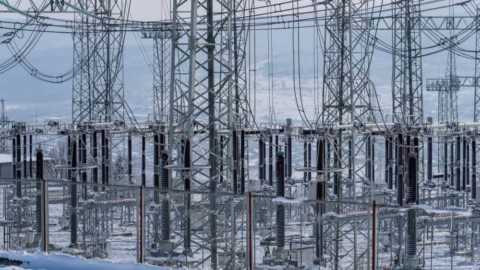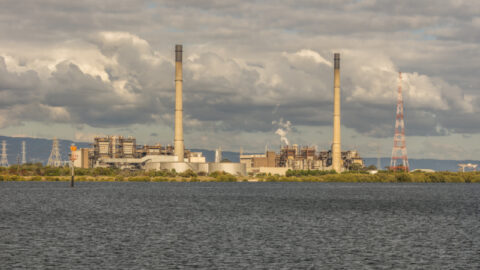By Agnes King, Australian Energy Week
As Australian Energy Week approaches, we gathered the thoughts of speakers in the batteries part of the Batteries and Hydrogen stream. These experts told us why clear and decisive action is needed now if batteries are to perform their role of energy storage in a 100% renewable system:
- Stephanie Unwin, Chief Executive Officer, Horizon Power
- Greg Hannan, Head of Network Strategy & Non-Network Solutions, CitiPower, Powercor & United Energy
- David Fyfe, Chief Executive Officer, Synergy
- Shannon O’Rourke, Chief Executive Officer, Future Battery Industries Cooperative Research Centre (FBICRC)
Energy experts say battery projects need to get off the drawing board and into field operation faster to fully understand the cost and performance implications of integrated energy systems.
But global supply chain issues are working against domestic players and will get worse unless we turn the tide through policy action and industry coordination – and soon.
Horizon Power discovered through a demonstration project of an integrated system of wind, solar and hydrogen storage in the remote coastal township of Denham in Western Australia, that the process requires more energy and water than originally envisioned. This substantially impacts commercial viability.
“We need to get stuff out of the lab and into the deployment scenario because every year this technology stays in the lab, we miss out on the opportunity to have it working in real life,” Horizon Power Chief Executive, Stephanie Unwin, said in a recent interview.
Ms Unwin said an equally important by-product of these prototypes is the development of a homegrown workforce with “technical skills that frankly don’t exist in the world”.
Greg Hannan, the Head of Network Strategy and Non-network Solutions at CitiPower, Powercor, and United Energy – three electricity distributors in the state of Victoria – agrees that working out the kinks quickly in emerging energy models is important to finding the lowest cost path through the energy transition for consumers and taxpayers.
CitiPower is forecasting a doubling of residential solar customers on its network in the next five years and sees community-owned batteries as a potential solution to “voltage and export issues”.
CitiPower is striking partnerships with the likes of the City of Yarra and the Australian National University to explore the potential of community-owned batteries to soak up excess power in localised solar generation hotspots, particular from residential customers.
“We want that excess energy to be captured because otherwise someone, somewhere else in the energy system has to build the equivalent amount of energy generation,” Mr Hannan said.
“To make the energy transition work at all levels of the supply chain, we need more storage and we’re excited about the role that community batteries can play.”
Meanwhile, Synergy is experiencing first-hand the extent to which the global supply chain crunch is hobbling battery storage projects. The Western Australian Government-owned energy generator and retailer is six months late switching on its Kwinana Big Battery due to global supply chain issues, and nearly $19 million over budget, according to media reports.
Synergy’s Chief Executive, David Fyfe, said demand is going through the roof for batteries and placing orders early is vital.
Growth in demand for batteries has increased by 64 per cent in the past two years and will accelerate dramatically to the end of the decade, a recent Future Battery Industries Co-operative Research Centre report shows.
Synergy had originally timed the $155 million grid-scale battery to align with the closure of the first of its Muja C coal units. The surge in rooftop solar is forcing its ageing coal-fired power stations to ramp output up and down. They are not designed for this variability. It is increasing wear and tear and operating costs.
The Kwinana Big Battery will store 200MWh of solar energy generated during the day, enough to power 160,000 homes for two hours, and can discharge it a rate of 100 megawatts after sunset when demand spikes.
Synergy has already submitted a development application for a second, larger battery able to store 800MWh of energy and absorb or supply energy at a rate of 200MW. It carries an estimated price tag of $650 million.
Australia has an opportunity to capture more value from its battery investments, according to Shannon O’Rourke, Chief Executive of the Future Battery Industries Co-operative Research Centre; but we must act “quickly and decisively”.
Although China is currently the dominant player across the battery value chain, many countries are seeking to diversify their battery supply chains which creates opportunities for alternative suppliers such as Australia.
Diversified battery industries could contribute A$16.9 billion gross value added and 61,400 jobs to the economy over the next seven years, a recent Future Battery Industries Co-operative Research Centre report states.
However, it requires action in six key policy areas to build an internationally competitive battery industry at speed and scale, including alliances and incentives, industry attraction and coordination, regional export partnerships, and increased domestic demand.
Hear from Stephanie Unwin, Greg Hannan, David Fyfe, Shannon O’Rourke and a host of energy leaders in the Batteries and Hydrogen stream at Australian Energy Week.
To register for Australian Energy Week head to: https://www.energyweek.com.au/registration
Energy Magazine is a Media Partner of the Australian Energy Week Conference.
















